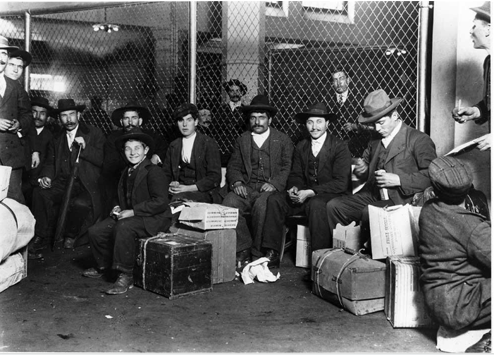The policies of the new Italian unitary state were directly responsible for mass emigration from Southern Italy, in short
- After unification, much of the economic and financial resources were concentrated in Northern Italy, particularly in Turin and Milan, to the detriment of the South. This created an economic gap between North and South which is still present today.
- The new unitary state introduced economic policies aimed at promoting the industrialization of the country, but these policies were mainly concentrated in Northern Italy, with little or no investment in the South. This caused a lack of jobs and economic opportunities in Southern Italy.
- There have been discriminatory policies against Southerners, especially in education and public administration. this has created a lack of career opportunities and an absence of an effective education system.
- Finally, emigration was also favored by international factors such as the opening of markets in America and the supply of labor, with many companies looking for cheap labor.
- In general, emigration from Southern Italy was the result of a combination of social, economic, and political factors, some of which are still present today.
In the NorthWest
| The majority of Italian immigrants arrived in the Northwest at the beginning of the twentieth century. Many came to work in the coal mines around Black Diamond; others took on construction jobs or toiled on small family farms. In 1910, Seattle was home to about 3,500 Italians; nearly half settled in neighborhoods southeast of downtown in Rainier Valley and Beacon Hill. The area soon became known as Garlic Gulch, Seattle’s version of Little Italy. Services geared toward this newly arrived immigrant group popped up, from grocery stores to barbershops. Our Lady of Mount Virgin Catholic Church tended to the community’s spiritual needs. |  |
Melting Pot?
| And so you know the difficulty of becoming an American. It is not a sudden process. You get over it. But you never quite get over it. You take it with you. This is the great, and not so great, aspect of being or trying to be an assimilated American. So says the writer Gay Talese about his experience growing up as an Italian American in South Jersey in the 1940s. It’s an introspective and angst-filled admission, somewhat unusual for Italian Americans, who tend to oscillate between mercurial romanticism and stubborn pragmatism. Yet his words are an important reminder that the process of assimilation is often, to borrow a phrase from Norman Podhoretz, a “brutal business”. From What Sets Italian Americans Off From Other Immigrants? |  |

